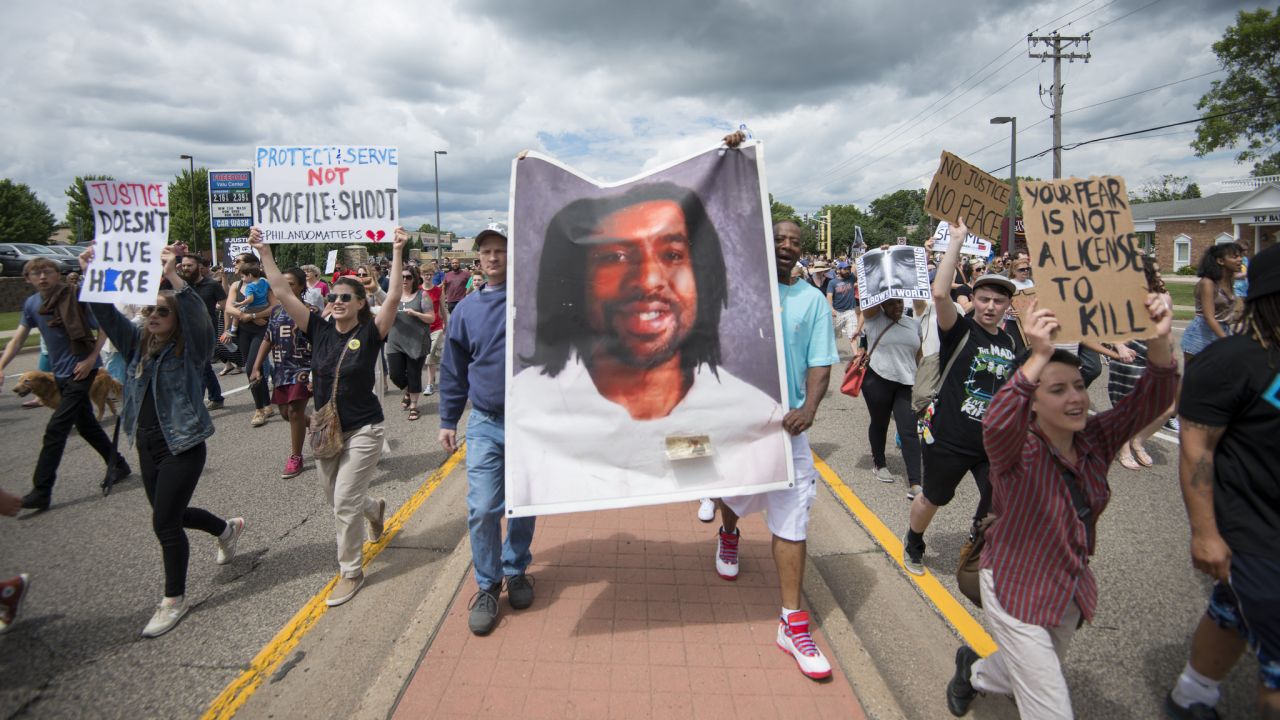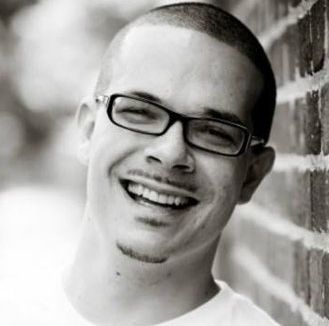
March against the Yanez not guilty verdict in the shooting of Philando Castile in St, Anthony, Minnesota. (Photo by Fibonacci Blue | Flickr CC 2.0)
This post originally appeared at The New York Daily News.
Just about a year ago, while riding through his hometown outside of Saint Paul, Minnesota, on the 4th of July, Philando Castile was racially profiled by the local police. It happened to him often. Officer Jeronimo Yanez claimed that as Castile drove past him in his car, the structure of Philando’s nose reminded him of the nose of a black man he had seen in an armed robbery video.
How well does a cop have to remember the nose from a video and how well did he have to see Philando’s nose as he drove by to think their noses looked so much alike that it warranted pulling Philando over?
You’d struggle to find a single white man in America who was ever pulled over for suspicion of armed robbery because of the shape of his nose.
Except the man in the video that Yanez claimed looked like Philando wasn’t Philando.
Philando, 32, was the beloved cafeteria supervisor in an area elementary school. He had worked there faithfully for years and greeted every child by name each and every day. He was a harmless soul — a sweet man known for his warmth and calmness. Knowing Philando was to be his friend.
But to Yanez, Philando was no friend, but a scary black armed robber. It was all in the cop’s mind.
But there’s the rub.
According to American case law, if cops believe their life is in danger, it does not matter if it truly is or isn’t, all they have to do is believe it. The decades old cases of Tennessee v. Garner and Graham v. Connor both shaped for future juries what police could and could not get away with.
In essence, the decisions granted police the ability to act on what they reasonably believe to be a threat, real or imagined. The threat might not exist, but if it does in the head of the officer, and they act on that perceived threat, the law can grant them near immunity from prosecution.
Philando Castile was no threat to Officer Yanez — none at all. Philando broke no law on that day — not a single one. He was racially profiled and pulled over without cause.
Castile, as gun owners are trained to do, told Yanez that he was a legal gun owner with a gun in his car, and reached calmly and slowly for his license. In that moment, Yanez claims he imagined something very different was about to happen. He claims he believed Philando was about to pull his gun out right there to shoot and kill him and that he needed to shoot Philando over and over and over and over and over again to stop that from happening.
But it wasn’t about to happen.
In the nearly 100 times police had hassled Philando across the years, he always responded with his typical calm, compliant demeanor.
But it wasn’t enough.
Philando’s nose literally scared the hell out of Officer Yanez. Philando was shot and killed because an officer claimed his nose reminded him of the nose of a man who was a threat.
As Philando fought to survive the repeated gunshots to his body, bleeding out in his car, Officer Yanez continued to point the gun at Philando, his fiancée, Diamond Reynolds, and her sweet little daughter.
Knowing that she could not call the police on the police, she did all she knew to do — she opened up Facebook, and broadcast the love of her life dying there in the car, live, while the officer continued to point his smoking gun at them.
To millions of Americans, this was and should have been an open and shut case. I agree with them. But the system is rigged.
The laws bend over backwards to protect police, no matter how foul and outrageous the circumstance. Make no mistake, the circumstances here are as foul and outrageous as they get, but Officer Yanez claimed he feared for his life, and how can a jury prove him wrong? It’s nearly impossible.
Even if this jury was righteous, and despised police brutality, they’d still have their hands and their hearts tied behind their back because of the terrible laws which allow police to be brutal with only a microscopic chance of ever being held accountable.
We basically have to have a recording of an officer saying they enjoyed the shooting and that they are going to lie about being afraid in order for them to be convicted. Otherwise, whatever they claim, goes.
It’s bogus. The people of Minnesota, and the entire nation, are told to remain calm and trust the system. The people of Minnesota, and the nation, then remained calm. We gave the system a shot. We waited for charges to be filed. We waited for the trial. We waited for the verdict.
Then this is what we got.
In my heart, I feel rage. In my heart, I feel an uncontrollable riot. More than any point in my life, I fully and completely understand how desperate people who just want justice, who just want fairness, who just want the people who murdered their loved ones held accountable. I fully and completely understand how people who get denied those basic requests could want to tear this country down.
It’s not what I want. I want justice. I waited for it. I marched for it. My kids marched for it. I prayed for it. It’s been denied.
It keeps being denied. And my heart has had about as much as it can handle.




